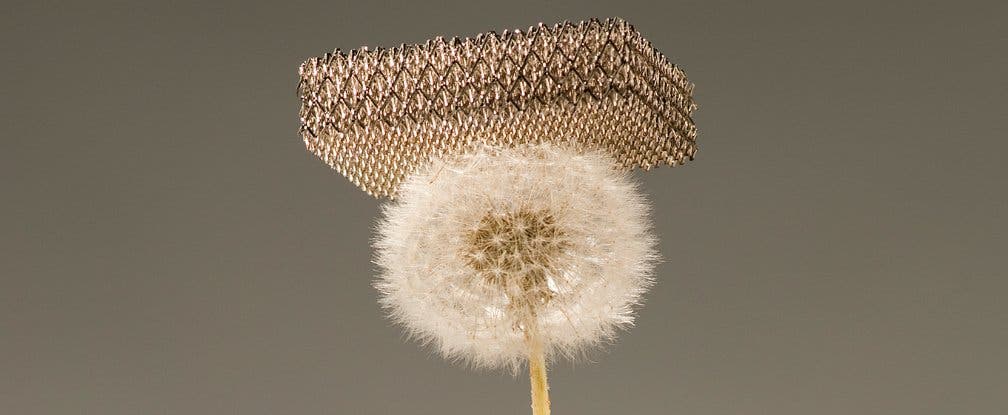The rest of the 1% is made up of hallow tubes of nickel. So, this makes for a very rigid, but extremely lightweight material. Just look at the picture below of the lightest material in the world, called microlattice, balancing on a dandelion. You know the potential is huge.
Microlattice was first developed in 2011, a joint effort by researchers from HRL, CalTech and the University of California, Irvine. Now, Boeing – the company who mainly funded the research – released an entertaining video presenting the work.
Sophia Yang, a research scientist at HRL Laboratories says they were inspired by human bones, which are very rigid on the outside, but very porous and mostly filled with air inside. This makes bones hard to break, but also lessens the strain on the muscles which have to carry all the load. Microlattice works similarly, only at a much higher tensile compression thanks to its hollow tubes just 100 nanometers across. This allowed for 99% open volume, all filled with air, which can absorb a lot of energy. If you were to crush it even more than halfway through, it would just bounce back to its initial size and shape.
Microlattice has a density of only 0.9 milligrams per cubic centimetre. Silica aerogels – the world’s lightest solid materials – have a density as low as 1.0mg per cubic cm. But whereas the structure of aerogel is mostly chaotic, microlattice has an orderly lattice structure which makes it a lot stiffer and stronger. Structure maters a lot. Just look at how weight efficient and versatile structures like the Eiffel Tower or the Golden Gate Bridge are.
Microlattice could become useful in aerospace applications, lowering the weight of aicraft, hence boosting fuel savings. It could also be used as battery electrodes, shock or acoustic absorber, construction material and so on.










